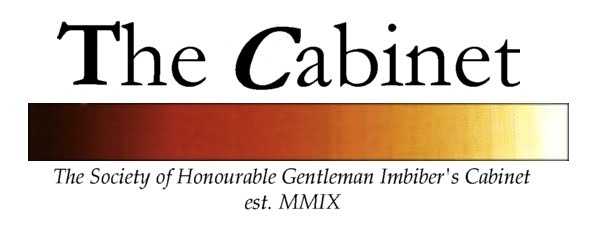(if you are curious about the object in the foreground, see the previous post)
The Cabinet met on August 23rd to consider The Famous Grouse, its components and its reconstruction from those components. Al related to the assembled group how The Famous Grouse was the best selling whisky in Scotland and furthermore how unusual it was for anyone there to drink single malts. Anyone other than snooty wankers in any case. The Famous Grouse, a pack of Tennent's lager and a pack of Irn Bru (http://en.wikipedia.org/wiki/Irn-Bru) and you have yourself a Glasgow Saturday night. And quite possibly a Glasgow Sunday morning, a Glasgow Tuesday midday and a Glasgow Thursday afternoon as well. Al furthermore related that, in his experience, The Famous Grouse was highly variable in flavour and quality. Sometimes smoky, sometimes not. Sometimes malty, sometimes not. Sometimes drinkable, sometimes not. Unfortunately the representative bottle brought to the table that evening was in the "not" category. Rough, uninspiring and devoid of flavour beyond alcohol and caramel. Somehow, however, it managed to attract at score of 4.0 under our new system (see the post before last, "The Inner Hebrides" for a detailed explanation of the science and philosophy behind the system). We eventually developed the plausible theory that the first scotch of the evening will always score higher because the Members are thirsty and grateful for anything that resembles whisky. The Famous Grouse resembled whisky. We will have to revisit it another time towards the end of a session and amend the score.
The Famous Grouse is, of course, a blend. It touts being blended from Glenrothes, Macallan and Highland Park, the latter two being among the most respected single malts in the world and the former being somewhat more obscure and primarily produced for the blending houses (Glenrothes is also in Cutty Sark). Glenrothes is no longer available locally, but Al fortunately had a bottle (or rather, part of one) which he donated to The Cabinet. Given that it is relatively rare I would like to be able to provide the reader with tasting notes, but alas, no notes were recorded and enough time has passed since the meeting that my recollection is now simply that we liked it and considered it to be a very fine Speyside in its own right, which was perhaps a bit of a surprise given that its destiny is by and large to be diluted to death in a giant blending vat. We gave it a score of 6.0.
 Next we sampled the Macallan 15 year old, which is a marvelous full-bodied malt bomb of course and scored it a 7.25 before moving on to the Highland Park 18 year old whose smoke and peat provided a welcome counter-point. The Highland Park scored at 8.125, the highest score yet assigned by The Cabinet.
Next we sampled the Macallan 15 year old, which is a marvelous full-bodied malt bomb of course and scored it a 7.25 before moving on to the Highland Park 18 year old whose smoke and peat provided a welcome counter-point. The Highland Park scored at 8.125, the highest score yet assigned by The Cabinet.So, now to the evening's experiment. Having tasted The Famous Grouse and having the single malt components of it before us, could we, the Gentlemen of The Cabinet, recreate said Grouse. At the risk of prematurely killing the suspense, the short answer was no. The long answer also contains the word no, but explains why. The dirty secret that underlies all the blends is that single malts contribute only a fraction to what is blended. The remainder is what is known as "grain whisky". Grain whisky is whisky that is produced from grains other than malted barley. There will still be some barley in the grain whisky, but it is mostly corn and rice. Edrington Group, which now produces Famous Grouse, operates the massive North British Distillery jointly with Diageo. This distillery, which imports 3000 tonnes of corn a week from France. This is what we were drinking. As we did not have any corn-based grain whisky on hand there was no (there's the "no") way to reproduce the blend. Instead we blended the three single malts to our taste and produced The Infamous Grouse: what The Famous Grouse could be if the distillers and, to be frank ultimately the consumers, were not so focused on a cheap buzz backed by heavy marketing. I debated about whether to make the formula for The Infamous Grouse public or not, but have decided that sharing is almost always better and more in keeping with the true spirit of whisky drinking.

So here it is: 10 parts Glenrothes, 3 parts Macallan 15 y.o., 3 parts Highland Park 18 y.o.
The score: 7.75*
(* it should be noted that the blenders were so pleased with themselves and their craft that that may have distorted the score)
It was a fine evening. A very fine evening. We toasted Lord Thomas Douglas, the Fifth Earl of Selkirk, and the immediately impending 200th anniversary of the founding the Red River colony. We also engaged in an esoteric debate about the various merits and drawbacks of changing our mean based scoring system to one based on the median or the mode. In the end we stuck with a calculated mean.
Slainte!




No comments:
Post a Comment